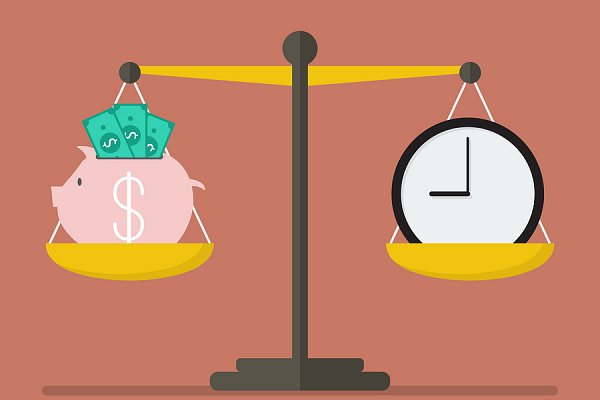In the current turbulent climate, it’s hard to escape politics. Turn on the TV, and it’s there — screaming at full volume. Check Facebook in line at the grocery store, and yep, your uncle’s shared yet another political meme. Eavesdrop on the conversation at the booth next to yours, and they’re talking politics. So it’s no surprise that even apolitical brands have gotten more political in their marketing.
But is that good — or bad?
Since the 2016 Presidential election, we’ve seen major brands get woke. More of them are speaking out for causes and against policies and actions they see as harmful or wrong. The consumer reaction to this wokeness has been a mixed bag. But the question remains, should brands take positions on hot-button political and social issues? Is it the smart thing to do? And is it the rightthing to do? Let’s take a closer look.
Brands Building Trust
Brands aren’t really about selling products and services. They’re about building trusted relationships with their customers and communicating shared values. Our current environment seethes with mistrust and skepticism — of the media, politicians, government, social media; you name it, people don’t trust it. For brands, shoring up credibility with their customers is more important than ever. Consumers are looking for brands they can believe in. And some brands are trying their darndest to rise to the occasion.
Consider Starbucks. After the Trump administration launched its travel ban, the coffee beverage giant announced plans to hire 10,000 refugees in its stores — a not-so-subtle rebuke of the policy. Taking a similar stance, Airbnb offered free housing to refugees stranded by the ban and launched its #WeAccept campaign. Both companies got a lot of press — positive and negative — in the process.
These moves by Starbucks and Airbnb weren’t all that risky, however, considering that a large chunk of their audiences are liberal-leaning. And though Starbucks did experience some backlash (including a failed boycott campaign), the company saw a significant jump in their reputation score following their announcement. So for them, taking a stand turned out to be a pretty smart move.
Brand Neutrality
On the converse side, not taking a stand has not turned out so well for other brands. We’re thinking specifically of Uber, who continued providing rides to and from New York’s JFK airport during the travel ban while striking NYC cab drivers stopped service in solidarity. Launched in response to the company’s decision, a very successful #DeleteUber campaign prompted thousands of Uber users to trash their apps. The company had to do some serious damage control to win back customers.
Of course, there are exceptions to this as well. Take Amazon, a behemoth of a brand that pretty much takes zero political stance on anything and suffers zero consequences as a result. You’ll find equal amounts of anti- and pro-Trump merchandise for sale on their site. And they advertise their products on anything from the hyper-liberal HuffPost website to the extreme alt-right Breitbart online magazine. Amazon understands their customers cross the political spectrum, and makes a deliberate choice not to favor one position over the other. And so far, that neutrality seems to be working just fine for them.
Other brands have found success walking a fine line between taking a stand and staying out of the fray. One example that comes to mind is Smirnoff Vodka’s campaign poking fun at Russia’s meddling in U.S. elections. Sure, it may be politically tinged. But the tongue-in-cheek attitude comes off as more self-referential than self-righteous.
Emboldened Brands
We’ve seen some brands take much more overt and bolder stances since the Presidential election. Take Proctor & Gamble’s “The Talk,” which confronts a divisive issue (racism) head-on. Pretty bold move from a traditionally conservative brand serving a very wide audience. But it also garnered them a ton of publicity.
Even more overtly, Penzy’s Spices stoked controversy after their CEO slammed the Trump administration and their policies in an open letter. While Penzy’s received some very vocal blow-back for their outcry (and lost around 3% of their customer base), the company also saw a 59.9% increase in online sales and a 135% increase in sales of gift boxes following the release of the letter. Penzy’s has continued to be an outspoken critic of the current administration, as one look at their Facebook page confirms. They've obviously determined taking this stand is the right strategy for them — financially as well as ethically.
Patagonia took one of the most aggressive stands against a specific policy and President. When the Trump administration made a move to shrink the Bears Ears National Monument in Utah to open up more area for mining and development, Patagonia dedicated the home page of its website to a single message: “The President stole your land.” By and large, this statement was praised by Patagonia’s loyal (and environmentally aware) customers who took to Twitter in vocal support.
You’ll even see stand-taking from some highly unlikely sources. During the 2017 Super Bowl game, 84 Lumber (a pro-Trump company) aired their short film depicting the perilous journey of a mother and her young daughter across Mexico to the U.S. border. The company’s CEO said the reaction was 50/50 positive and negative, and they definitely got blasted on social media for a perceived endorsement of illegal immigration. But the video also got 3.4 million views on YouTube. Great brand exposure. But how much of those views turned into paying customers?
When Brand-Standing Goes Wrong
Yes, consumers want to trust their brands. But do they want their brands to take stands on political issues? There are plenty of consumers out there who just want Starbucks to sell them a Triple Mocha Frappuccino without the political commentary. But research suggests that a growing number of consumers expect brands to play an active role in shaping society. A recent survey shows 68% of respondents say they believe that businesses are just as responsible as governments for promoting positive social change.
That’s a big responsibility for brands. The question is: Are brands up for it? We think it depends largely on the company, and how they go about doing it. Brands who jump on social or political bandwagons can sometimes come across as being opportunistic or inauthentic. Even worse, they can look like they’re insensitive or trivializing the issue. Case in point: Pepsi’s ill-conceived and widely panned TV spot born out of the Women’s March and Black Lives Matter movement.
Brands who do decide to get political with their marketing should remember that above all else, authenticity is key. If your organization wants to take a stand on a particular issue, make sure it rings true to who you are and what you value. When MAC launched its Viva Glam campaign to raise funds for people living with HIV/AIDs, it just made sense for them. The cosmetic company has long been a vocal LGBTQ advocate, so taking this stand was completely on brand. A more traditional company, say like Mary Kay, might not have been able to pull off a Viva Glam-type campaign quite as convincingly.
Causes Vs. Customers
When considering promoting a cause or issue in your marketing, you’ll also want to consider your customer base — who they are, what they believe in, and how they’ll respond to your new-found activism. Are your customers more conservative, liberal, or a mix of both? Will they appreciate you sharing your views, or would they prefer that you stick to whatever it is you do (or sell)? Will you run the risk of alienating folks, or could you end up attracting new buyers? Weigh the risks of losing customers against the potential of drawing attention to an issue that’s important to you — as well as to yourself.
If your customers are comprised of millennials — or if you’d like to attract more of this demographic — than you’re probably taking less of a risk by taking a stand. Consumers between the ages of 18 and 35 tend to be more cause-focused, and actively seek brands that align with their values.
They also tend to be more progressive. Around 44% of millennials identify as nonwhite, so they value brands that celebrate diversity and inclusivity. They also tend to be more socially tolerant than older demographics, particularly when it comes to immigration, gay rights, and reproductive rights. Politically, 44% of millennials claim to be independents, while only 28% align with Democrats and 19% with Republicans. So while they skew more progressive socially, they also don’t want to be pinned down by labels. Source.
Brand Activism 101
If you’ve found an issue or cause that’s deeply important to you, that aligns with your brand and who you are as an organization, then by all means integrate it into your marketing. Just be thoughtful about how you do it. Here are a few tips about taking a stand without turning off your customers.
Unless you’ve done some serious research and polling, don’t assume you know who your customers voted for, what political party they belong to, or how they feel about certain issues. Start bashing a specific leader of the free world, for example, and you might get blow-back from places you don’t expect. Avoid focusing in on specific issues. Instead, speak to your values in broader tones that most people can get behind: inclusion, diversity, compassion, kindness, equality, freedom, dignity. Similarly, speak for something rather than railing against it.
Of all the politically influenced ads we’ve seen over the past year and a half, we think this campaign from Heineken does a great job in striking that precarious balance between standing up without shutting people out. In this campaign, Heineken brings two people with opposing view points together to talk about their differences over a cold beer. Instead of obviously taking sides, the spot encourages dialogue and empathy. And at the risk of sounding too political ourselves, we think we all could use a bit more of both these days.


